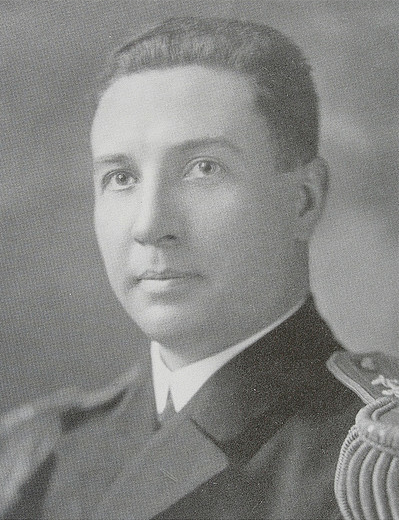Guam Surrendered!
First Loss of US Territory in World War II
Guam is the largest and most southern island of the Marianas island chain. Guam had come under American ownership following the Spanish-American War of 1898 and within three years, the US Navy and Marine Corps had footholds at Piti and Sumay, respectively. When Guam was invaded by Japanese forces on 8 December 1941 (7 December in the United States), Capt. George McMillin was serving as the island’s governor in addition to his role as CO of the naval base. The neighboring islands, Saipan and Tinian—islands which would prove crucial later in the war—were captured by the Japanese during World War I from the Germans. Japanese nationals began colonizing the islands, and the military strengthening its defenses there. By 1935, “westerners” were forbidden in the Japanese mandates.

Capt. George McMillin, Governor of Guam, who surrendered the island on 10 December 1941.
Both the United States and Japan were party to the Washington Naval Conference of 1922 which forbade both from further fortifying their Pacific island holdings. Despite the fact that Japan withdrew its consent to the Washington Naval Treaty in 1936, the US stayed true to its word and continued to deny any requests from Governor McMillin to further fortify Guam. In fact, the island’s coastal artillery had been eradicated by the 1930s.
Navy leadership saw Guam as a low priority, as it was essentially useless in defending the Philippines, the real pride of the US in the Pacific. If invaded, no reinforcements were to be sent; personnel on the island were to destroy all militarily sensitive documents. McMillin showed some foresight when he had all American civilians evacuated from the island weeks before the attack, and a few weeks later Guamanian civilians were also given the option to evacuate. Those who did not surely regretted it, as they would be forced to live under the harsh conditions of Japanese occupation.
Shortly before 8:30 a.m., less than four hours after McMillin was informed about the attack on Pearl Harbor, Japanese planes based at Saipan began bombing Guam. The bombers focused on military installations at Piti and Sumay. McMillin ordered that all Japanese nationals be incarcerated immediately. More bombing runs were made that evening, and continued the morning of 9 December. When the Japanese succeeded in making a landing on 10 December, there were approximately 250 sailors, 150 Marines, and 100 members of Guam’s native Insular Force Guard. In addition to having much smaller numbers than the Japanese landing force of nearly 6,000 troops, American and Guamanian defenders had only a handful of BARs (Browning Automatic rifles) and machine guns, leaving many of the island’s defenders with nothing but .45-caliber pistols or, at best, M1903 Springfield rifles. Many were completely unarmed. By 6:00 a.m. on 10 December (9 December in the States), McMillin had surrendered the island after 17 men had been killed and 35 injured. The loss of Guam to the Japanese marked the first loss of American territory in World War II.
All personnel on the island were taken prisoner of the Japanese, and Guamanian civilians were used for forced labor for the remainder of the Japanese occupation. In July 1944, however, US forces would return to the island and successfully recapture it. But that’s another story for another time…stay tuned!
The first battle of Guam is featured in the Museum’s current special exhibit Infamy: December 1941. For a detailed map and oral history interview with Ray Church, one of the Marines guarding Governor McMillin’s home during the attack, see the Interactive map.
This post by National WWII Museum Curator Meg Roussel.
- Posted :
- Post Category :
- Tags :
- Follow responses to this entry through the RSS 2.0 feed. You can skip to the end and leave a response. Pinging is currently not allowed.
One Response to “Guam Surrendered!”
Rosalind Sinclair says:
I was horrified to hear this news! My husband Bob’s joining up to fight right after Christmas, just like most of the other men in my neighborhood. I’m going to have to figure out how to do my bit for the effort at home.



